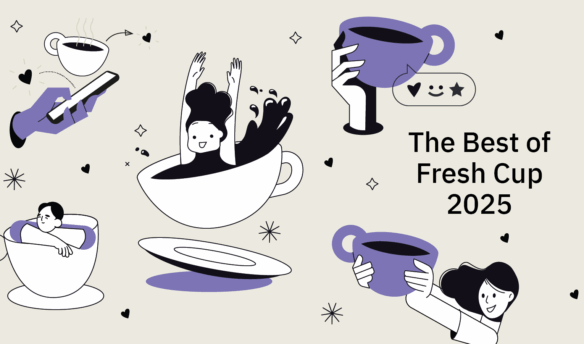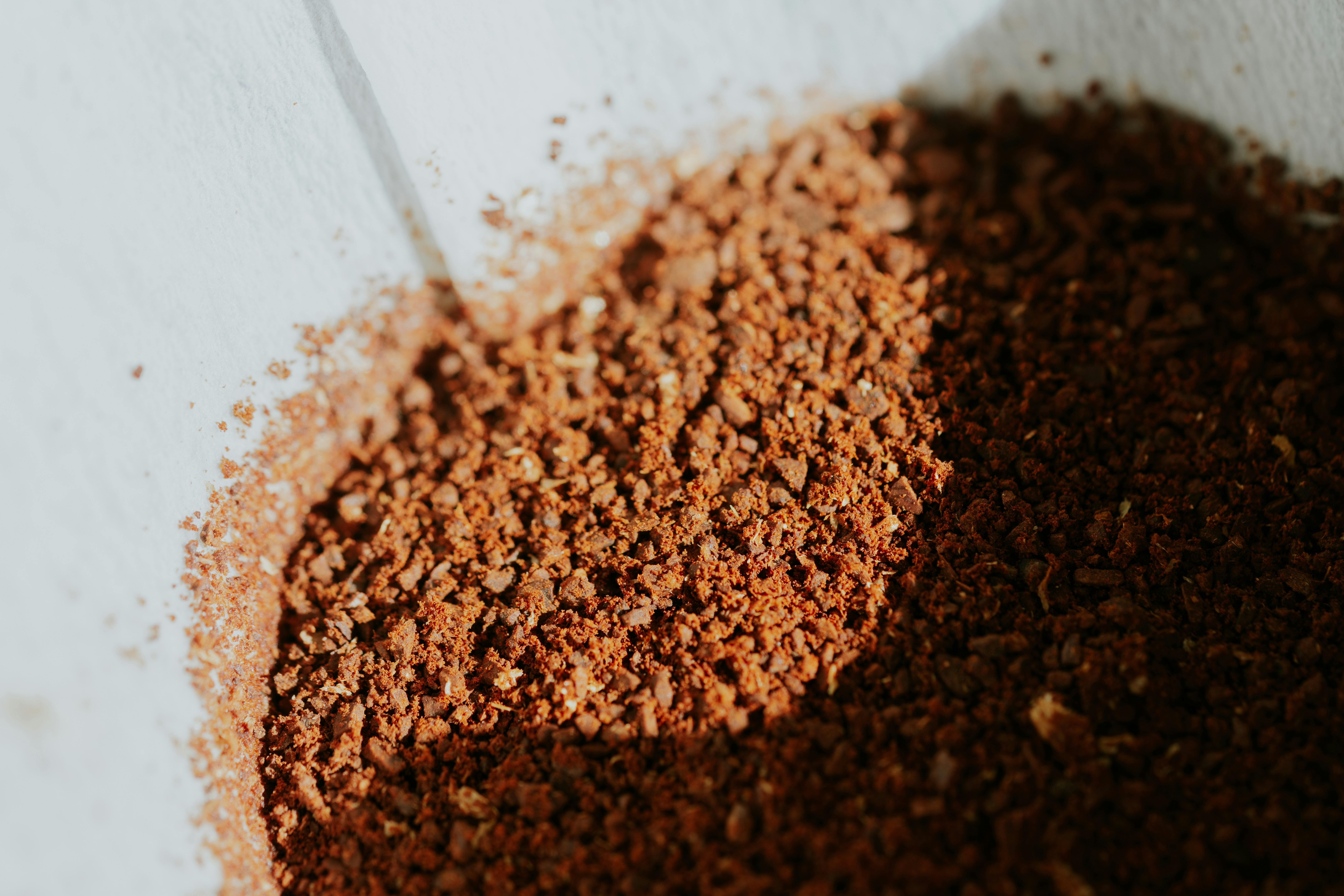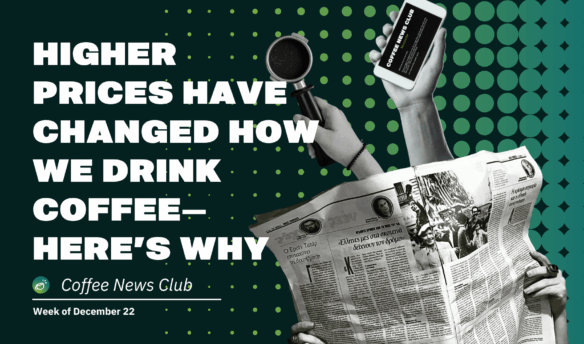Coffee prices continue to fluctuate, Hawaii faces a coffee’ farmageddon,’ and could science create a decent cup of decaf?
📩 Get the latest coffee trends in your inbox weekly—subscribe here.
‘Arabica Steadies After Touching More Than 1-1/2 Year Lows’ – via Reuters
Bad weather and supply constraints caused coffee prices to surge at the end of 2021, reaching a 10-year high and staying buoyant throughout 2022. However, that didn’t last in 2023: the Intercontinental Exchange (ICE) shows that coffee prices have already fallen sharply.
Coffee’s commodity price fell from a high of $2.58 per pound in early 2022 to $1.42 this week, pushed ever lower by favorable weather conditions in Brazil and increased stockpiles. According to a Wall Street Journal piece (which is behind a paywall), this amounts to a 40% drop. As of this writing (January 13th), the price of coffee has fallen 14% since the beginning of the year.
In September, ICE’s coffee stock reached a 23-year low but has since recovered to reach a six-month high. Coupled with a huge drop in shipping costs, exporting coffee has become much cheaper than last year.
The Reuters article is full of rather dry data points like this, but they indicate continuing volatility in the coffee markets that can negatively impact producers and others along the supply chain. When prices go up, producers invest in their farms and plant trees; when prices fall, costs have to be cut.
“As farmers cut investments, production goes down, revenues suffer, and farmers find it extremely difficult to recover and renovate their farms,” wrote RAICES program director Paul Hicks in a 2018 column for Daily Coffee News. “The people that suffer most in this scenario are farmworkers. They work less and earn less, and the way they cope is to eat less and pull their kids out of school. And they migrate.”
Coffee price volatility is nothing new—we’ve been dealing with price crises for decades, as noted in this excellent piece for Sprudge—but as long as a solution evades the industry, it’s those at the bottom end of the chain who suffer most.
‘Can Science Finally Create a Decent Cup of Decaf?’ – via Slate
According to Betteridge’s law of headlines, the answer would be no. Despite that, and even though the article makes no clear conclusions, this piece by Casey Rentz is a good exploration of the potential for a scientifically-created caffeine-free but still delicious coffee.
As any decaf drinker can tell you, specialty coffee shops often fail to provide delicious non-caffeinated options, even though decaf drinks comprise upwards of 20% of the market. That’s not to mention the derision aimed at the caffeine-sensitive, with phrases like “death before decaf” permeating Instagram hashtags and adorning a never-ending scroll of cheap merch and Pinterest graphics.
Vaguely threatening T-shirts notwithstanding, decaf beverages are expected to reach a market size of over $39 billion by 2033. As Rentz notes, the current options for decaffeinating coffee beans are imperfect—they’re either chemical-heavy or tend to remove a lot of the flavor along with the kick. Scientists have been working on ways to remove caffeine from coffee for decades, but recently a new technology called CRISPR could supercharge those attempts.
CRISPR is a groundbreaking and relatively cheap technology used to edit genes, removing or “turning off” unwanted aspects of plants, animals, or, more controversially, human DNA. Coffee researchers in the public and private sectors have been using CRISPR to explore the possibilities of caffeine-free coffee. However, like other foods, the association with GMOs remains a publicity hurdle to overcome. “Even if low-caffeine coffee would be a potable godsend for us slow metabolizers,” Rentz writes, “it might be a while before public opinion turns around.”
More News
‘Portland’s Nossa Familia Coffee Launches Roasting Operation in Brazil’ – via Daily Coffee News
‘Sylvester Stallone’s Tiger Eye Coffee Delivers Liquid Motivation’ – via Trend Hunter
‘Royal Gems: Royal Coffee Adds 50lb Green Coffee Boxes To Their Small Parcel Lineup’ – via Sprudge
‘Starbucks CEO Howard Schultz Tells Corporate Workers to Return to the Office 3 Days a Week’ – via CNBC
‘The 14th Annual Sprudgie Awards Winners And Honorees’ – via Sprudge
‘Sucafina and ProfilePrint Invest in Brazilian Green Coffee Tech Company Csmart’ – via Daily Coffee News
The Week in Coffee Unionizing
Workers at Sunergos Coffee in Louisville, KY, have voted in favor of unionizing, joining the same union covering Heine Brothers Coffee employees, who won their election last September. The vote was 30-14 in favor, with better salaries and working conditions among the organizers’ highest priorities.
“Now it’s time to bargaining for a fair contract that includes living wages, transparency from our employer, and the dignity and respect all workers deserve,” the union said on Twitter.
“I think that we are still feeling a lot of excitement and we are happy about that, but we also are looking forward to the changes we would like to see at Sunergos,” employee Emmanuel Siordia told the Louisville Courier Journal.
Sunergos has five locations around Louisville. Its owners took a diplomatic stance when the union push was announced in August, telling the Courier Journal that they wanted to avoid an adversarial relationship with the potential union. “We hold the value that we want our employees to be happy and to provide well for them, and to give opportunity for advance,” co-founder Brian Miller said, “and the idea that a mediator would be necessary for that hasn’t really entered our minds.”
Coffee and the Climate Crisis
Coffee producers in Hawaii face an existential threat as they battle “a perfect storm” of coffee leaf rust, drought, and a berry borer beetle infestation that has caused yields to drop by up to 50% and could force some farms out of business.
In November, the Kona Coffee Farmers Association (KFCA) warned that the “Hawaiʻi coffee industry is bracing for what could be one of their worst years for production.”
Coffee leaf rust (roya) first appeared in the Kona region in 2020. While many farmers in countries susceptible to roya have planted rust-resistant varieties, none of Hawaii’s commercially-grown coffee varieties are resistant. Drought is also an issue, with temperature fluctuations and unpredictable weather patterns adding to the stressors. “Nothing is normal anymore with the weather patterns,” KCFA President Suzanne Shriner said in a recent report emailed to members. “Everything is moving around on us. It’s been a problem.”
Kona coffee farmers are facing a years-long recovery process, with prices for Kona coffee set to rise as a result. “I wouldn’t be at all surprised if a pound of Kona coffee in the grocery stores is $60, $65 by June,” said Bill Myers of Heavenly Hawaiian Farms.
“We will raise our prices to try and get a little bit closer to even, which is helpful for us—but not so great for the consumer,” Shriner told Hawaii Public Radio in September. “We jokingly like to call it ‘farmageddon’ because it always seems like something new is hitting farmers.”
The Week in Corporate Coffeewashing
The nebulous concept of “beanless” coffee is back in the news again, as another startup positions itself as a “more sustainable” alternative to “the deforestation and massive plantations” of coffee. But this time, it’s sparkling.
Zero Coffee, a brand created by Toronto-based investment platform Cult Food Science, is the latest not-coffee coffee to launch. Companies like Atomo and Minus brought their canned products—beverages made with date pits or other upcycled ingredients designed to taste like cold brew—to the market last year. And just like those two, Zero Coffee bills itself as sustainable and planet-saving. According to Food Business News, the product “eliminates the unsustainable land use and deforestation that results from conventional coffee bean farming.”
For Sprudge, which has dutifully traced the rise of beanless coffee products over the years, Zac Cadwalader rallies against the myopic and potentially misleading use of sustainability in their marketing:
These claims function as a sort of zero-sum game, in which the vague totem sustainability becomes the end-all be-all, conveniently forgetting to ledger the impacts on those who stand to lose the most from not-coffee: the producers, those very real, terribly inconvenient human beings who actually grow and harvest the coffee in the first place.
Whether we ever get to the point where not-coffee overtakes real coffee remains to be seen—Cadwalader doesn’t think it will, “And if it does, it will probably be the least of our problems in the grey-scale dystopian times we will find ourselves in.”
Perhaps tellingly, Atomo—they of the date-pit cold brew—appears to be restructuring, reportedly laying off employees just six months after raising $40 million in funding. The company calls it a “strategic realignment and restructuring,” saying that the move “will enable us to more quickly scale our vision of providing sustainable coffee products to the masses.”
Is Coffee Good For You?
A study from Portugal has found that increased coffee consumption may reduce the severity of non-alcoholic fatty liver disease (NAFLD) in those with type 2 diabetes.
NAFLD is a collective term for liver disorders caused by a build-up of fat in the liver, which can lead to fibrosis, cirrhosis (scarring of the liver), and eventually liver cancer.
Published in the journal Nutrients, the study surveyed 156 middle-aged participants, of which 98 had type 2 diabetes. Researchers used urine samples to measure caffeine intake accurately (a shift in research methodology we discussed last week).
Researchers found that participants with higher coffee intake had healthier livers and pointed to caffeine, polyphenols, and other natural products found in coffee as potential reasons. The findings build on previous studies suggesting that coffee can help prevent liver cirrhosis and help reduce the risk of liver disease.
Beyond the Headlines
‘Fit for an Emperor: St. Helena Coffee’ by Thomas Schmid
‘A Peruvian Forest was Vanishing. Coffee and Community Trust Saved It’ by Will McCarry
‘When Coffee Becomes A Religious Experience’ by Valorie Clark
‘What We’ve Been Led to Believe About Coffee and Climate Change Part Two’ by Ashley Rodriguez
Coffee News Club is written by Fionn Pooler and the Fresh Cup editorial team.









